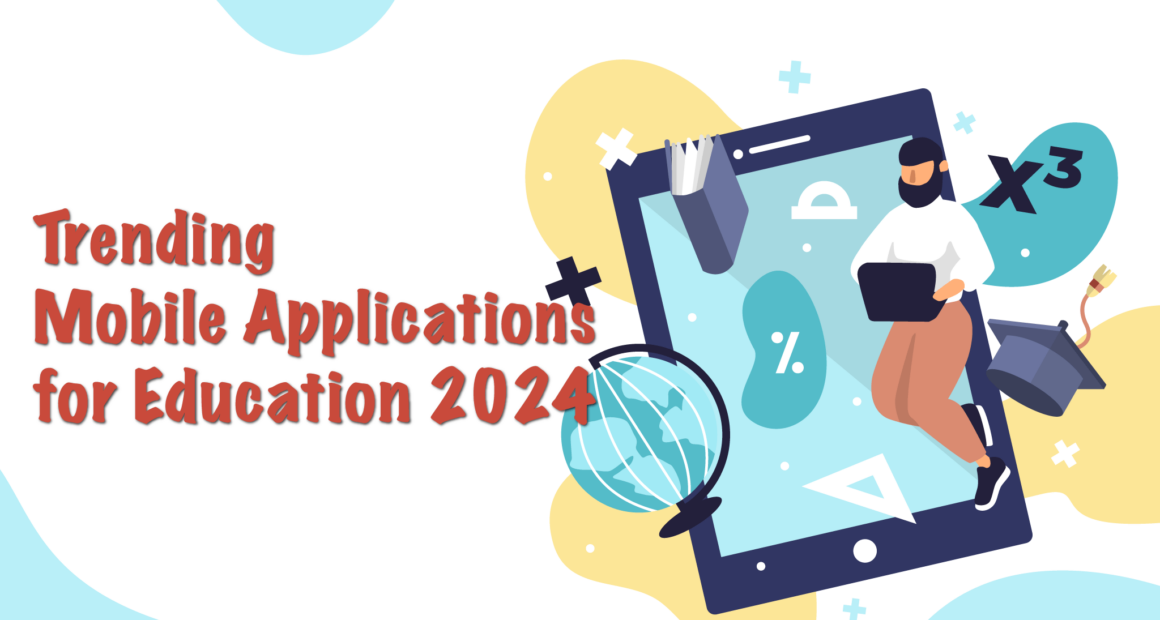In recent years, the educational landscape has undergone significant changes, largely influenced by the growing prevalence of mobile applications. The swift progress in technology, combined with the demand for more tailored, accessible, and adaptable learning experiences, has enabled mobile applications to transform the educational sector. Catering to K-12 students, college attendees, and professionals alike, the market for educational mobile applications has surged, providing a diverse array of tools for learning, teaching, and collaboration.
This analysis will delve into some of the most popular mobile applications in education, examining their features, effects, and anticipated future developments.
Top Trending Education Apps:
- Duolingo
- Category: Language Learning
- Overview: Duolingo is a popular language-learning platform that has seen exponential growth. It offers lessons in over 30 languages, using a game-like interface to teach vocabulary, grammar, and pronunciation.
- Features:
- Bite-sized lessons
- Speech recognition for pronunciation
- Progress tracking and reminders
- Personalized lessons based on performance
- Leaderboards and challenges for gamification
- Impact: Duolingo’s success can be attributed to its engaging, user-friendly design and the gamification element that keeps users motivated. It’s ideal for beginners and intermediate learners.
- Market Trends: The demand for language learning apps continues to rise, with people seeking to learn new languages for personal, academic, and professional growth. Duolingo’s freemium model has proven successful in acquiring both individual users and institutions.
- Khan Academy
- Category: General Education (K-12 and College)
- Overview: Khan Academy provides free online educational content, covering subjects from math to history to economics. Its mobile app allows students to learn at their own pace with a focus on interactive, video-based content.
- Features:
- Free courses, from early education to college-level subjects
- Personalized learning dashboards
- Practice exercises and quizzes
- Video explanations and step-by-step guides
- Impact: As an open-source educational platform, Khan Academy has empowered millions of students globally by providing high-quality learning resources for free. Its personalized learning approach also makes it an invaluable tool for educators and parents.
- Market Trends: Given its accessibility and free content, Khan Academy remains a top choice for educators and students looking for supplemental learning tools.
- Google Classroom
- Category: Learning Management System (LMS)
- Overview: Google Classroom is a robust platform for teachers and students to collaborate, manage assignments, and communicate. It’s integrated with other Google Workspace tools like Google Docs, Google Sheets, and Google Meet.
- Features:
- Assignment creation and submission tools
- Communication tools for teachers and students
- Real-time collaboration on documents
- Cloud-based storage for student work
- Grade tracking and feedback system
- Impact: Google Classroom has become essential for remote learning, especially since the pandemic. It simplifies the learning process and integrates well into the daily lives of educators and students. It’s particularly useful for schools that rely on Google’s ecosystem of tools.
- Market Trends: Google Classroom is experiencing widespread adoption, and its seamless integration with other Google products ensures its continued relevance in both K-12 and higher education settings.
- Quizlet
- Category: Study Aids and Flashcards
- Overview: Quizlet is a mobile application that helps students study by creating custom flashcards and using various study modes like quizzes and games.
- Features:
- Create and share custom flashcards
- Study modes like “Match,” “Learn,” and “Write”
- Audio pronunciations for difficult words
- Collaborative studying and live classes
- Spaced repetition algorithms to improve retention
- Impact: Quizlet helps students of all ages prepare for exams and improve retention. With millions of user-generated flashcard sets, it’s a community-driven platform that offers vast content across subjects.
- Market Trends: Quizlet has become a staple in educational settings, particularly for high school and college students. Its gamified study approach is highly appealing, and the app’s premium features are increasingly popular among advanced learners.
- Coursera
- Category: Online Courses and Certifications
- Overview: Coursera offers courses, certifications, and degree programs in partnership with top universities and organizations. The platform caters to learners of all levels, from introductory courses to specialized professional certifications.
- Features:
- Access to top-tier university courses and specializations
- Peer-reviewed assignments and community discussions
- Certificates and degrees from accredited institutions
- Mobile-friendly video lectures and assessments
- Personalized course recommendations
- Impact: Coursera has significantly contributed to the democratization of higher education, enabling individuals worldwide to access quality learning resources from institutions like Stanford, Yale, and Google.
- Market Trends: As lifelong learning becomes more essential in today’s workforce, Coursera’s emphasis on career-focused education and flexible learning paths is making it increasingly popular.
- Edmodo
- Category: Communication & Collaboration Platform
- Overview: Edmodo is a communication platform that connects students, teachers, and parents. It’s widely used in K-12 classrooms to share assignments, communicate, and monitor progress.
- Features:
- Class creation and assignment management
- Parent-teacher-student communication
- Interactive tools like polls and quizzes
- Integration with Google Classroom and other LMS
- Impact: Edmodo offers a secure and organized space for teachers to manage classrooms virtually, especially during the shift to online education.
- Market Trends: As schools increasingly adopt hybrid or remote learning models, Edmodo’s relevance continues to grow. Its ability to streamline communication and collaboration in education is a major draw.
Key Trends in the Mobile Education App Market:
- Personalized Learning:
- AI and machine learning are increasingly integrated into mobile learning apps to offer customized learning paths. Apps like Duolingo, Quizlet, and Khan Academy tailor lessons and quizzes based on user progress, which maximizes the effectiveness of learning.
- Gamification:
- Mobile apps are leveraging game-like elements such as challenges, leaderboards, rewards, and interactive quizzes to enhance student engagement. Duolingo, Quizlet, and others utilize gamification to keep learners motivated, which has shown to improve retention and performance.
- AR and VR Integration:
- Augmented reality (AR) and virtual reality (VR) are beginning to play a role in creating immersive educational experiences. Apps using AR/VR can bring complex concepts (such as science experiments or historical events) to life, providing more interactive and engaging learning environments.
- Mobile-First Learning:
- The shift towards mobile-first learning is becoming more pronounced, as mobile apps provide the convenience of learning on-the-go. Many learning apps are designed to be mobile-friendly to accommodate busy students and professionals who prefer to learn through their smartphones.
- Collaborative Learning:
- Many mobile education apps, such as Google Classroom and Edmodo, are designed to facilitate collaboration between students and educators. Features like discussion boards, peer reviews, and real-time collaboration tools are making education more interactive.
- Focus on Lifelong Learning:
- Platforms like Coursera and LinkedIn Learning are placing a strong emphasis on professional development, offering online courses and certifications. As people look to reskill or upskill throughout their careers, apps offering career-oriented courses are becoming crucial.
- EdTech Investment and Global Expansion:
- The EdTech sector is seeing significant investment, as venture capitalists and governments are realizing the potential of mobile apps in revolutionizing education. This is leading to the global expansion of successful educational apps, especially in emerging markets.
Conclusion:
Mobile education applications have emerged as essential resources for contemporary learners, providing unparalleled access to a wide array of materials and opportunities for tailored, interactive learning experiences. Applications such as Duolingo, Khan Academy, and Coursera are transforming our educational approaches, spanning from language acquisition to professional growth. The growing inclination towards mobile-centric, gamified, and AI-enhanced platforms indicates a promising future for educational technology, with ongoing innovations enhancing accessibility and engagement for learners across the globe.
As the mobile education sector progresses, it is evident that applications will maintain a crucial role in making learning more accessible, serving a diverse global audience, and offering adaptable, scalable educational solutions for the 21st century.









